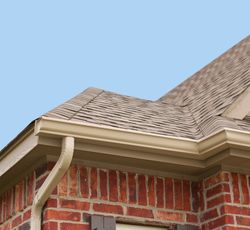
Your home’s gutters play a crucial role in keeping your property and foundation safe from water damage. However, because this component is so inconspicuous, most homeowners forget all about the system. The following guide offers a bit of insight into the history of this system.
How Did Gutters Come About?
The concept of the modern seamless gutters dates all the way back to 3,000 B.C. During this period, they were made of brick and clay, and were used as a sewage system to protect homes from damage.
Then, in 27 B.C., the Roman Empire began using this system. They built roads designed to drain water downhill into a gutter, which would then carry the water away. Years later, in 47 A.D, the Romans brought this model to Britain, which implemented the system between the 10th and 13th centuries.
During this time, the Norman Empire expanded upon the current design, creating a system that brought water away from homes through sloped roofs. This water was then channeled into decorative gargoyles, which were designed to pour the water out and away from the building. A few years later, downspouts were added to prevent the water from splashing onto the residence’s walls.
How Did Modern Gutters Come About?
 For the most part, gutter systems homeowners use today are relatively similar to the ones from centuries past—the functionality of these amenities is essentially the same. The primary difference comes from the design and materials used.
For the most part, gutter systems homeowners use today are relatively similar to the ones from centuries past—the functionality of these amenities is essentially the same. The primary difference comes from the design and materials used.
While older gutters were made of cast-iron, lead, or wood, modern varieties are often built with lighter, more functional materials like aluminum, steel, and PVC. While older design utilized gargoyles, modern designs feature seamless gutters.
To keep your gutters in top shape, turn to the experts at NextGen Roofing in St. Louis, MO. These licensed and bonded experts are proud to provide a broad range of roofing services, from shingle repair and replacements to roofing installations. They also maintain gutter systems and ensure water is safely directed away from the home. Call (309) 863-5495 or visit their website to learn more about their services.
About the Business
Have a question? Ask the experts!
Send your question

